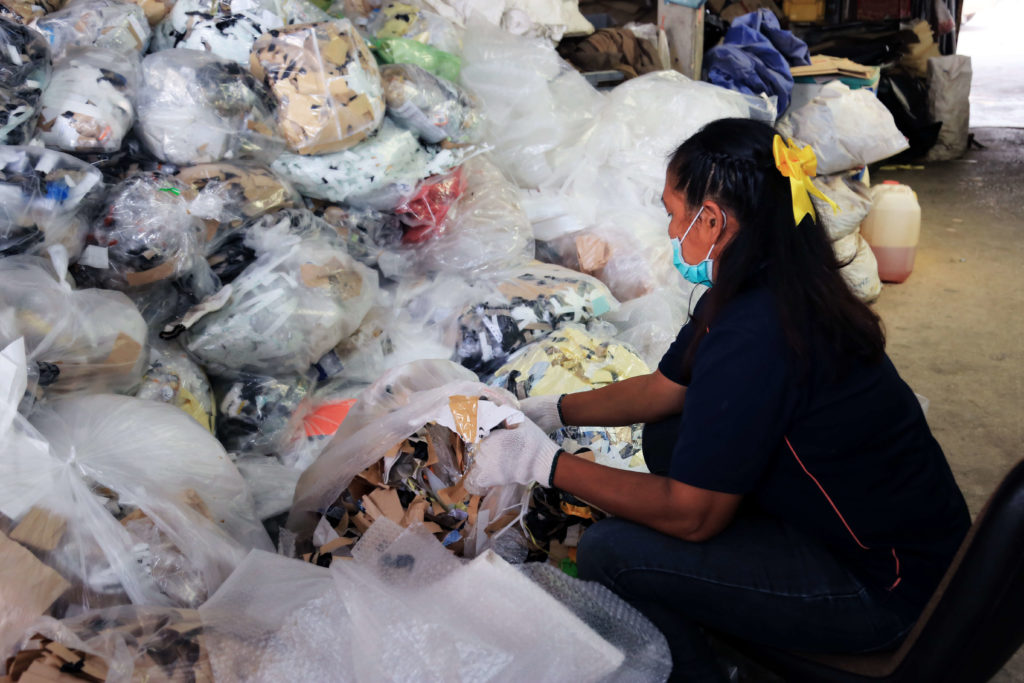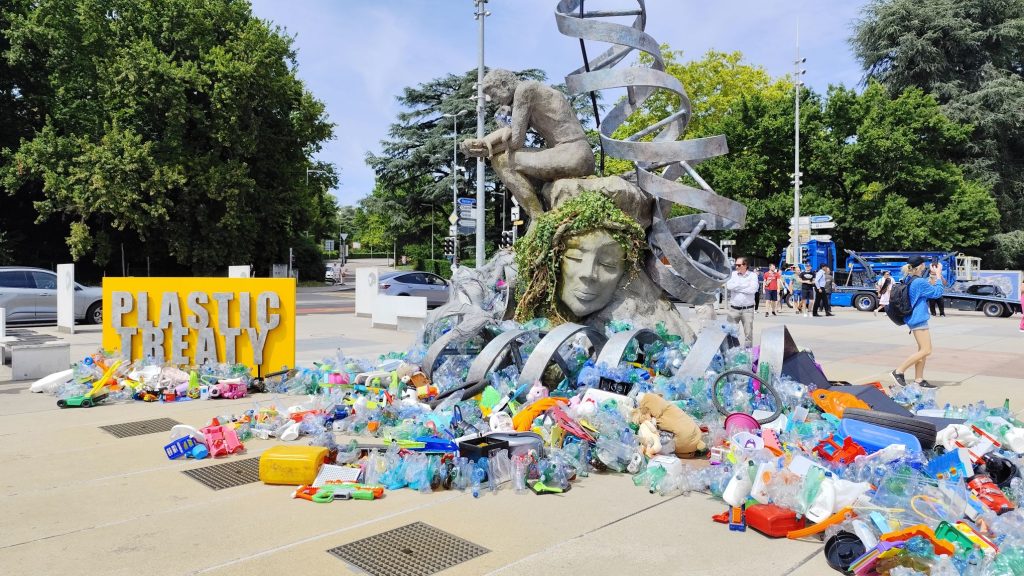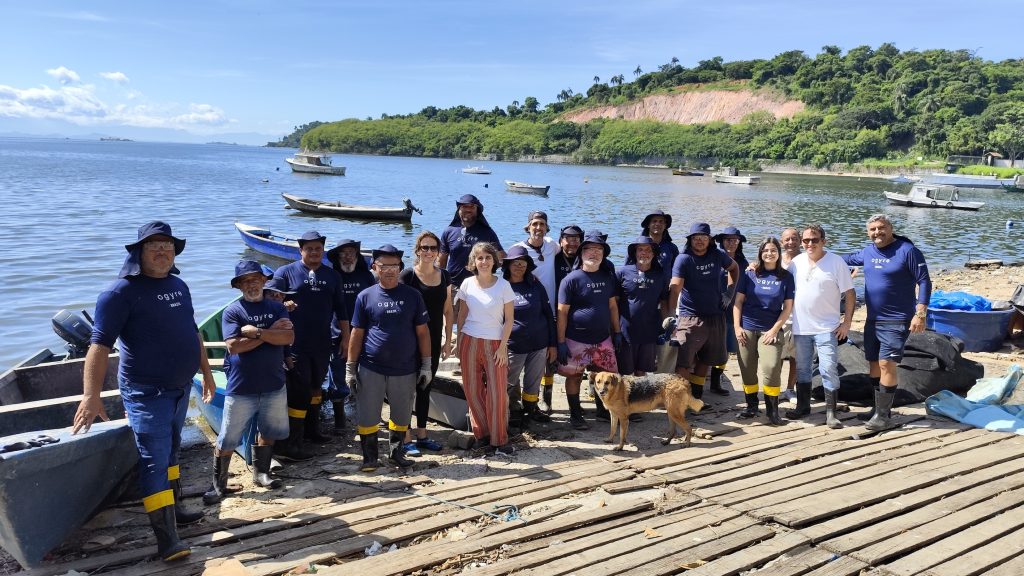ADDITIONALITY: GOING BEYOND BUSINESS AS USUAL
Though highly technical, the concept of additionality is key when it comes to safe guarding the environmental integrity of projects; its definition is rather simple to begin with: The requirement of additionality ensures that a project’s positive environmental impacts are additional compared to the impact in the absence of the project.
Below we summarise the main points of the Guidance Note 2: Additionality and Positive Lists that was published in December 2020, and includes full analysis and background info on the concept.
BACKGROUND
The term “additionality” was first used for GHG mitigation projects in the early 1990s1. At that time, only a few projects were being developed with the specific objective of reducing GHG emissions (or promoting carbon sequestration in trees), and it was important then to demonstrate that these project activities would not have taken place “but for” this new source of climate finance2.
The requirement of additionality aimed to prevent existing activities (e.g., reforestation) being re-labelled as GHG mitigation projects, giving the false impression that these were established to offset a rise in GHG emissions taking place elsewhere.
Since then, additionality has become a mandatory requirement for any climate mitigation project, both at UN level as well as in voluntary markets (e.g., VCS, Gold Standard, etc.).
HOW WE CAN DETERMINE ADDITIONALITY
To determine additionality, we need to apply a complex analytical process and specialised technical knowledge.
Additionality is the deviation from a baseline of practices. Baselines, in turn, are projections of past trends into a future scenario that would take place in the absence of a specific project.
Establishing baselines requires observing past trends and projecting them to the future, taking into account factors that could affect their trajectory.
For example, past levels of waste generation could continue linearly into the future, accelerate due to economic growth, or slow down due to economic downturns (Figure 1). Thus, a series of assumptions must be used to decide which of these three alternatives (and their level of intensity) is the most likely future scenario.
In the case of waste recovery projects, there is the added complication that modelling future activity levels in the sector requires a second order analysis. First, one needs to determine future levels of waste generation and, based on this, derive future waste recovery levels (Figure 2).
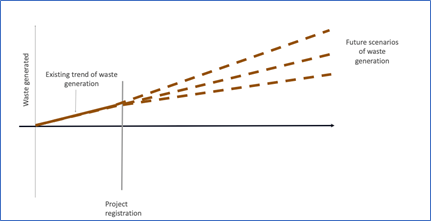
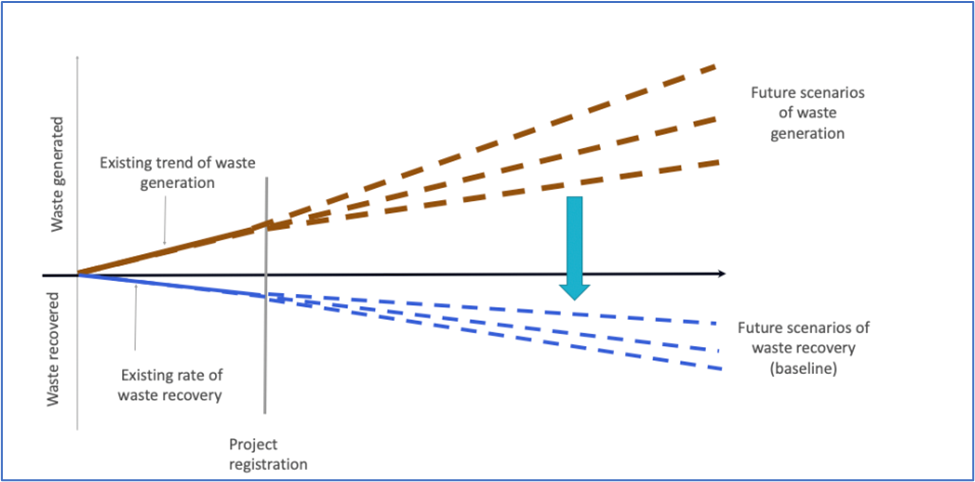
Irrespective of the complexity of analyses, and whatever set of parameters is chosen to establish a baseline, it is not possible to monitor them since future practices both include and interact with project activities. Baselines are business-as-usual (BAU) future scenarios and, by definition, counterfactual constructs.
To illustrate the analytical challenges involved, a recent study conducted by Pew and Systemiq3 used Monte Carlo analysis to estimate the variability in future waste management scenarios, conducting 300 simulations for each scenario to achieve projections with 95% confidence levels.
Once a baseline is established, it is then necessary to determine the additionality, i.e., how project activities differ from this future scenario. A series of approaches have been proposed and adopted by various carbon standards to address this question: “Environmental additionality”, “project additionality”, “investment additionality”, “financial additionality”, “barrier analysis”, etc. are some of the analytical tools that have been used to try to define whether a project’s impact would not have happened in the BAU future scenario4. In many cases, future scenarios are dependent on multiple factors that require extremely complex multivariant analysis, such as economic global equilibrium models5 or the stochastic analysis mentioned above.
Irrespective of all these efforts, keen analysts could still find fault in these projections and suggest error type II problems, i.e., that non-additional projects are approveds6,7.
ADDITIONALITY AND WASTE CIRCULARITY PROJECTS
The concept of additionality is important for circular action projects. With the urgent need to develop more waste recovery capacity worldwide prevalent, this additional capacity will have to include a range of complementary approaches, involving different actors and activities. These, in turn, will reflect different circumstances, levels of sophistication and scale.
On one end, there is the need for large scale projects developed by large waste management companies – often contracted by local governments – involving investment in new infrastructure, equipment, staff, and working capital. New sources of capital and forms of financing (e.g., green bonds, public-private partnerships, blended finance) will need to be developed to ramp up investment in these ventures.
On the other end, future solutions must also take into account the role of informal waste pickers. The Pew & Systemiq study estimates that around 11 million people worldwide are involved in the informal waste collection sector. Consequently, this sector needs to be engaged in future waste management solutions8.
At the same time, given the current degrading working conditions and low payment levels of waste pickers, their involvement cannot be promoted unless future schemes ensure both additional income and improved working conditions.
Circular credits for waste recovery could be one of the solutions to the challenges faced by the informal waste sector. However, effectiveness will require credit schemes designed in a way that reduces barriers to entry, ensures inclusiveness and contributes to improved working conditions for the informal sector, while still ensuring environmental integrity.
CONCLUSIONS
Additionality plays a key role in ensuring that the environmental impact of projects contributes to an improvement of current trends of environmental degradation. At the same time, the analysis of additionality has to be contextualised, and take into proportion the relative contributions and impacts of different types of activities.
It is clear that the informal waste recovery sector makes an extremely important contribution to reducing waste pollution globally. In order to ensure that the sector continues to play an important role, it is essential that credit systems’ rules do not preclude informal waste recovery projects from participation.
At the same time, larger projects may need to demonstrate that their impacts add to business-as-usual practices, in order to be eligible for additional circular credit revenue. This requirement will ensure that such revenues are directed to activities that change current practices, and do not divert financial flows from activities that could be playing a more important role.
- Moura-Costa, P.H., 1993. The Innoprise-Face Foundation Rehabilitation of Logged-over Forests project. A note to the European Tropical Forest Research Network Newsletter 6.
- Moura-Costa, P.H., Stuart, M.D. and Trines, E., 1997. SGS Forestry’s carbon offset verification service. In: Greenhouse Gas Mitigation. Technologies for Activities Implemented Jointly. Proceedings of Technologies for AIJ Conference. Vancouver, May 1997. Riermer, P.W.F., Smith, A.Y. and Thambimuthu, K.V. (Eds.). Elsevier, Oxford. Pp. 409-414.
- Pew and Systemiq, 2020: Breaking the Plastic Waste – a comprehensive assessment of pathways towards stopping ocean pollution.
- See UNFCCC CDM Tools. https://cdm.unfccc.int/Reference/tools/index.html
- World Bank, 2020: Modelling macroeconomic impacts and global externalities. Economy & Environment. Good Practice Note 7. http://documents1.worldbank.org/curated/en/815971530883640016/pdf/ESRAF-note-7-Modeling-Macroeconomic-Impacts-and-Global-externalities.pdf
- Oko-Institut 2016: How additional is the Clean Development Mechanism. https://ec.europa.eu/clima/sites/clima/files/ets/docs/clean_dev_mechanism_en.pdf
- Michaelowa et al., 2019: Additionality revisited: guarding the integrity of market mechanisms under the Paris Agreement. Climate Policy. https://doi.org/10.1080/14693062.2019.1628695
- Pew and Systemiq, 2020: ibid. Which also states that, “Discouraging waste-picking on the grounds of poor working conditions would deprive entrepreneurs of vital income. Conversely, encouraging the proliferation of the informal recycling sector as a cost-effective waste management service is to be complicit with sometimes unacceptably hazardous working conditions.”
